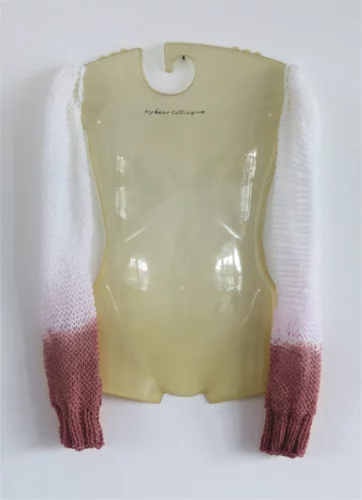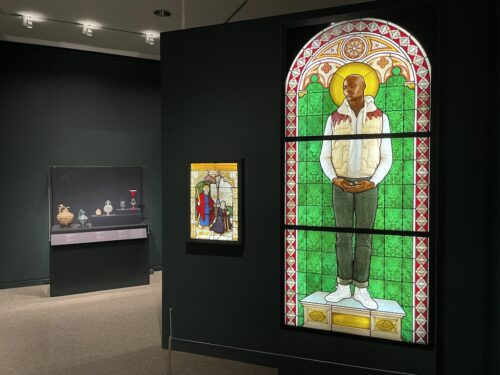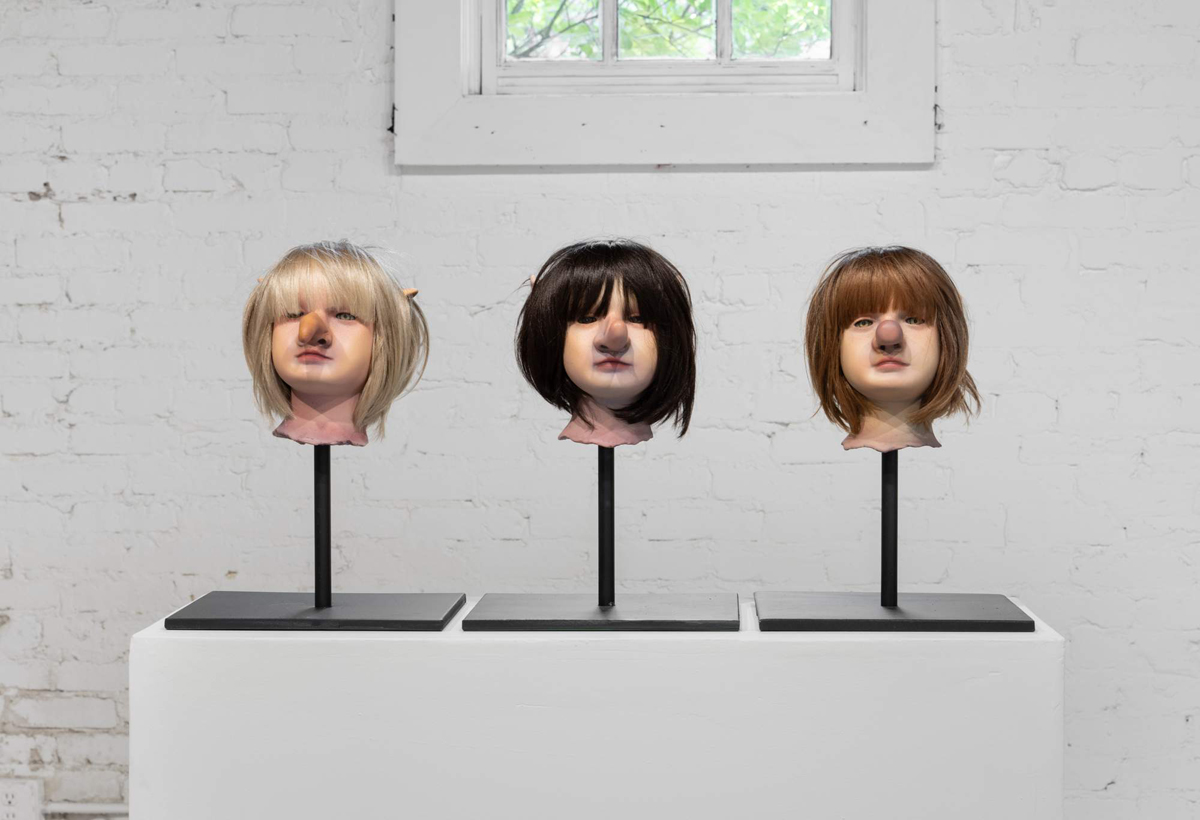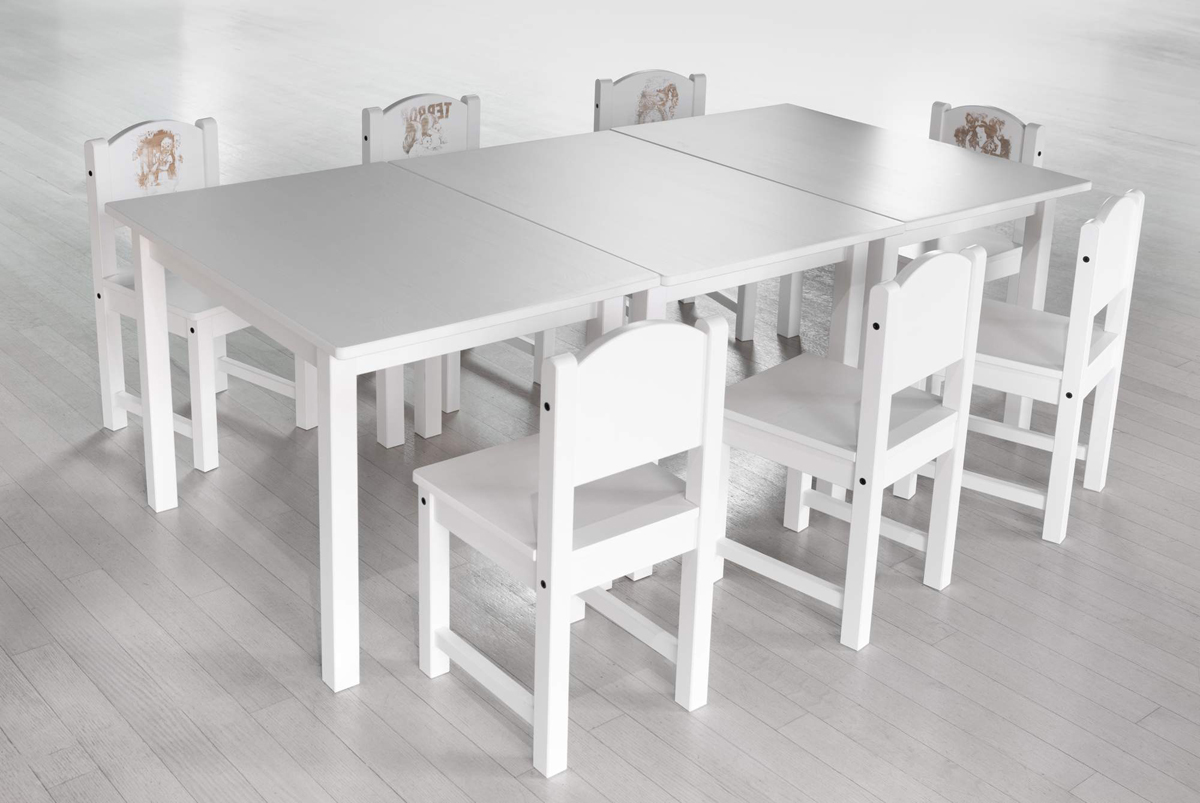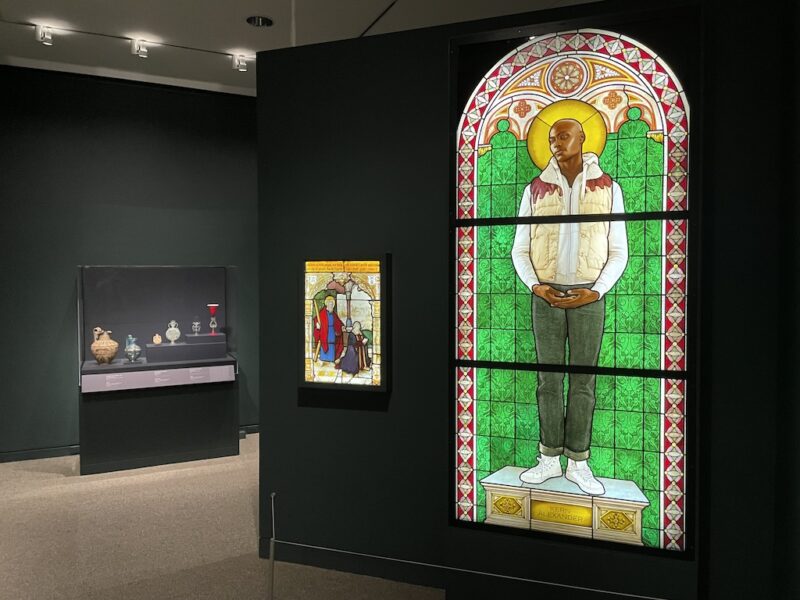Tucked at the end of sleepy, sun-soaked Cady’s Alley in Georgetown, von ammon co. is a pleasantly unpretentious approach to the “minimal” contemporary gallery space etched in recent public memory. A skylight breathes life into the stark black-and-white interior, suffusing an analog softness through an undulating interplay of light and shadow.
Remnants of Georgetown’s industrial past—exposed brick, a repurposed tree posing slyly among neighboring support beams, and even the stroll down the cobblestone alleyway to the gallery entrance—culminate in an authenticity and friendliness bereft from trendy “industrial” art spaces that alienate as much as they entice with their broody allure.
The space strikes a playful balance between leaning into the slightly jarring coldness of the typical modern gallery and unassuming old-fashioned charm that emphasizes the beguiling atmosphere of current offering Too Little Too Late, which closes Sunday, June 16th. The collaboration between Dinos Chapman and Jason Yates is a vivid, unsettling portrait of American life that harps on memories of our recent past to offer an ominous glimpse into our future.
Perhaps the gallery’s most maximalist exhibition to date, the title Too Little Too Late tritely captures the pitfalls of fanatic consumerism and the continual inability of American heroism to mask the fractured promise of ultimate freedom in the land of the brave, posing questions about the long-term viability of American optimism in the new millennium. The exhibition draws heavily from a malaise for the unique cultural sphere of LA—a city that is equal parts glamour and grime, where socialite luxury and suburban decay are head to head—the ideal lens to explore the tension between superficial beauty and underlying rot.
